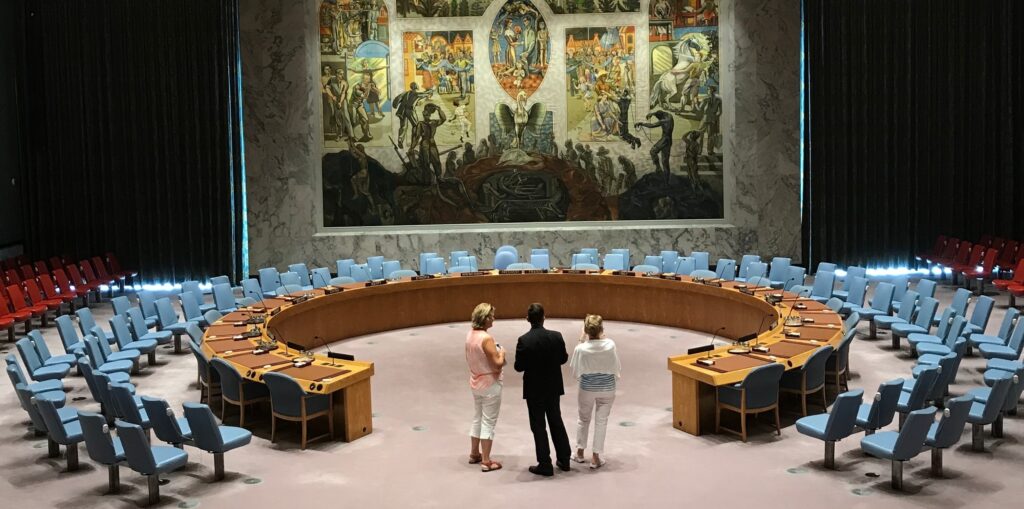When the United States Congress passed a landmark bill this summer creating a legal framework for stablecoins — a class of digital currencies pegged to fiat currencies like the U.S. dollar — most headlines focused on financial regulation and fintech innovation. But buried beneath the GENIUS Act lies an opportunity for U.S. foreign policy: a potential for modernization of humanitarian assistance.
For decades, international aid has struggled with challenges of established delivery models — supply drops from cargo planes, long chains of subcontractors and bureaucracy that can dilute both impact and intent. It’s the very reason the UN has undertaken historic reform of the institution. In the current geopolitical environment, where fragility is rising and resources are tightening, that model merits scrutiny.
“If we can reach more people, faster, with stronger controls and lower costs — that benefits everyone,” says Alejandro Guzman, a 15-year United Nations veteran who coordinated emergency responses in Syria, Haiti and Ukraine. Now based in Geneva, Guzman is among a growing number of humanitarian professionals calling for a fundamental shift in how aid is delivered: from goods to digital cash, and from manual systems to blockchain-backed infrastructure.
“If we can reach more people, faster, with stronger controls and lower costs — that benefits everyone… There has to be a better way.”
“There has to be a better way,” he says.
From Air Drops to Agency
In the most acute emergencies — earthquakes, active conflict or famine — in-kind aid remains essential. But many modern crises unfold in places where markets continue to function, even under strain.
“Economies are incredibly resilient,” Guzman explains. “If you can inject a little liquidity into them, aid can both feed families and fuel local recovery. It’s a win-win.”
“Give it a few days and you’ll see tuk-tuks, donkeys, trucks hauling goods back in,” he adds. “People buying. People selling. You just have to get money into their hands.”
“Give it a few days and you’ll see tuk-tuks, donkeys, trucks hauling goods back in… Economies are incredibly resilient.”
Digital cash assistance — delivered via mobile money or stablecoin-linked wallets — empowers families to buy what they need locally, without the stigma or inefficiency of food handouts. “They don’t have to carry around a big sack of food marked USAID,” Guzman says. “They can walk into a market, make choices and retain their dignity.”
And fact is, it’s exactly how the U.S. already delivers aid domestically through programs like Social Security and FEMA disaster relief, enabling better accountability and transparency.
This shift from control to trust has profound implications for the aid sector. “The assumption has always been that poor people don’t know what they need,” he remarks. “But they do know. They just lack the means.”
The Stablecoin Advantage
The case for digital aid isn’t just philosophical — it’s technical. In 2022, a pilot project in Ukraine delivered U.S. dollar-backed stablecoins to war-displaced families. Transfers cleared in minutes. Fees dropped by 85%. Every transaction complied with U.S. sanctions and reporting requirements.
And Ukraine is not alone. The World Food Programme’s Building Blocks system has transferred more than $555 million in blockchain-based assistance since 2017, saving $3.5 million USD in bank fees. In Ukraine alone, WFP estimates it saved $67 million by streamlining cash distribution across 65 aid organizations. In Ecuador, CARE used stablecoin vouchers to help refugee women access health services and nutrition. In Northeast Syria, Mercy Corps piloted a blockchain-backed payments program that supported local farmers and vendors — boosting financial resilience in one of the world’s most volatile regions.
These models are not theoretical. They’re operational. And they point to a future where aid is faster, more accountable and more secure.
“Even a stolen phone can’t unlock an iPhone’s wallet,” Guzman says. “And every dollar is traceable — from donor to recipient.”
These models are not theoretical. They’re operational. And they point to a future where aid is faster, more accountable, and more secure.
Closing the Leak in the System
Skeptics of cash-based aid often cite concerns about misuse. But decades of data show that around 90 percent of digital cash transfers are spent on essentials: food, shelter, medical care, even school fees. The greater challenge isn’t fraud — it’s friction.
“When USAID allocates $10 million, that money doesn’t go straight to the field,” Guzman explains. “It moves from D.C. to a UN agency, through banks in Rome or Geneva, then to regional banks, then to local vendors. Every stop adds friction, costs money.”
In fact, in high-risk settings, banks may charge up to 15% in risk mitigation fees alone. “With stablecoins, we can bypass all of that,” he says. “The funds can go straight from a U.S. Treasury account to a trusted partner on the other side of the world — instantly, transparently, with up to 85% savings on transaction costs.”
As donors grow more demanding and resources more constrained, the inefficiencies of traditional aid systems are becoming politically untenable — and strategically dangerous. “We’ve made people in the middle of nowhere stand in line to fill out 50-question forms just to receive $100,” Guzman quips. “Try doing that at your local DMV.”
A Geopolitical Tool
This debate is not just about humanitarian optimization. It’s about geopolitical leverage.
Stablecoin-powered aid, especially when denominated in U.S. dollars, strengthens American influence in fragile states while reducing reliance on slower, riskier supply chains. It enhances transparency in high-risk environments and ensures compliance with counterterrorism regulations. And it reinforces U.S. leadership in shaping 21st-century financial infrastructure — a space increasingly contested by authoritarian powers seeking to build parallel systems.
For years, U.S. lawmakers have called on the UN and its partners to cut red tape, modernize operations and deliver better results. Crypto-backed aid has the potential to meet that challenge. But it won’t happen automatically. It requires investment — not just in technology, but in political will.
As Guzman puts it, “We’ve built the rails. Now we need to use them.”
Stablecoin-powered aid, especially when denominated in U.S. dollars, strengthens American influence in fragile states while reducing reliance on slower, riskier supply chains.
Riding the Digital Wave
Through the GENIUS Act, the U.S. is building the legal and technical foundation to modernize foreign assistance. But it must resist the temptation to treat innovation as a substitute for funding. The promise of efficiency doesn’t negate the need for scale. If anything, it makes the case for deeper engagement — using 21st-century tools to extend America’s reach in a more contested and fragile world.
“We already have the tools to deliver aid that’s faster, cheaper and more respectful of human dignity,” Guzman says. “The only question now is whether we use them.”





